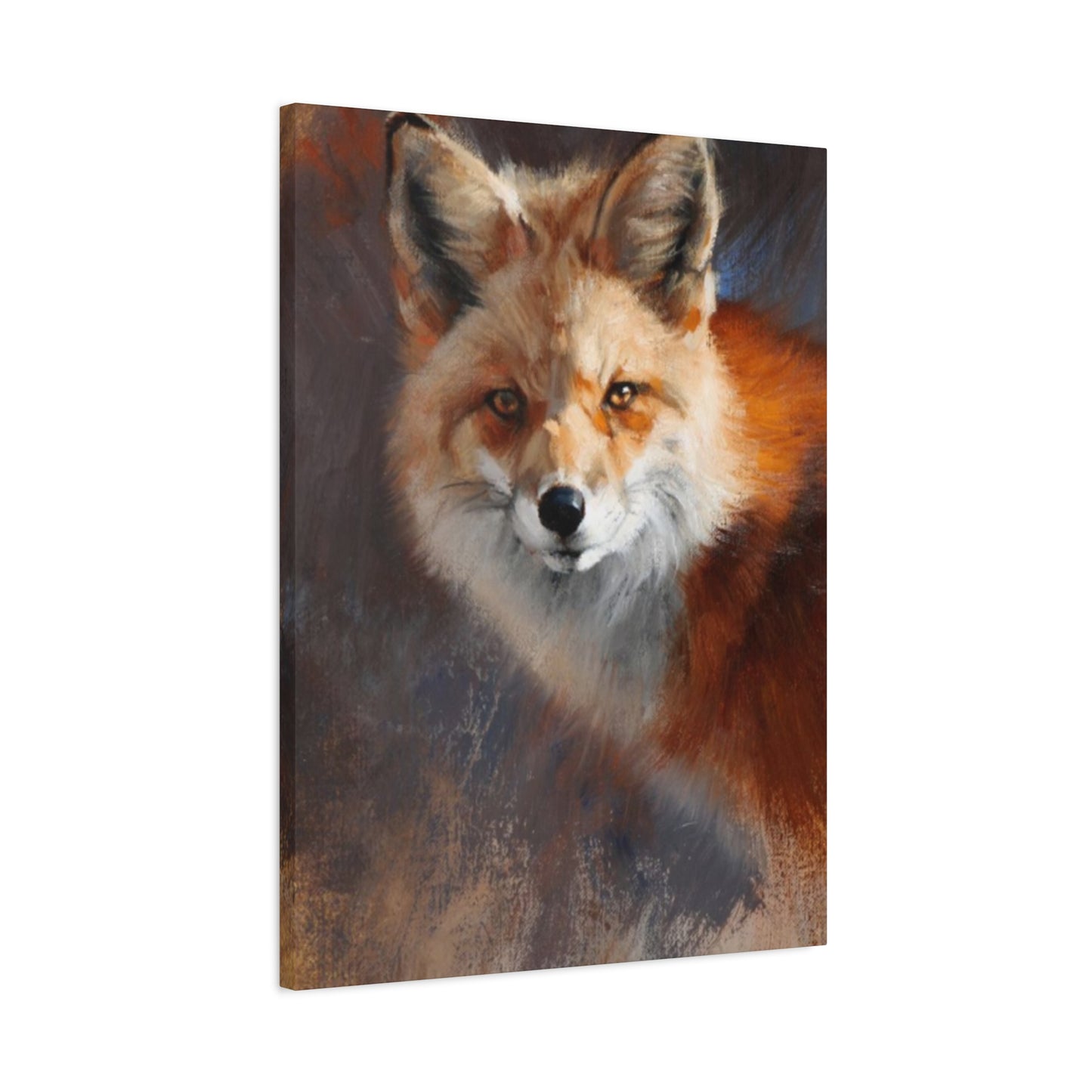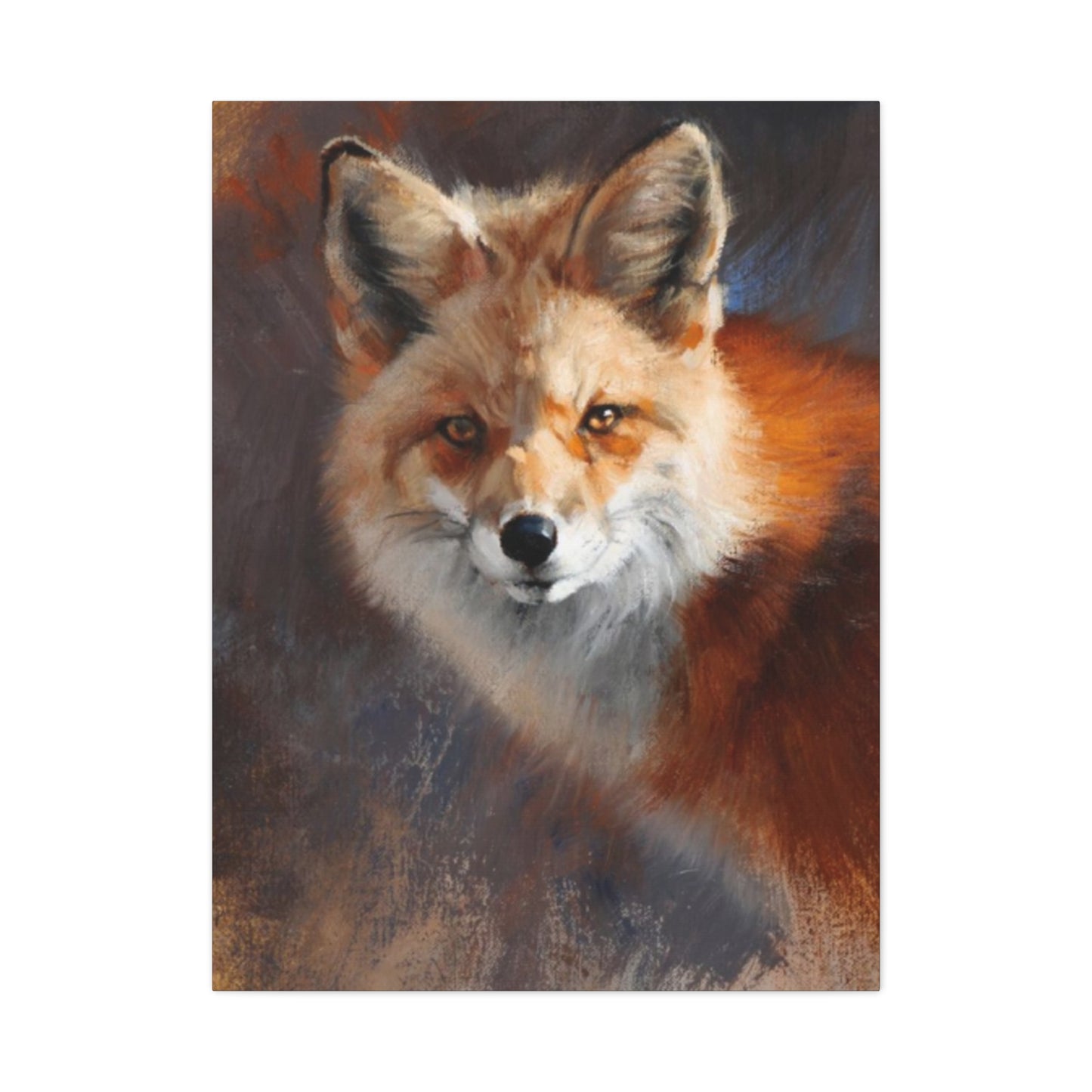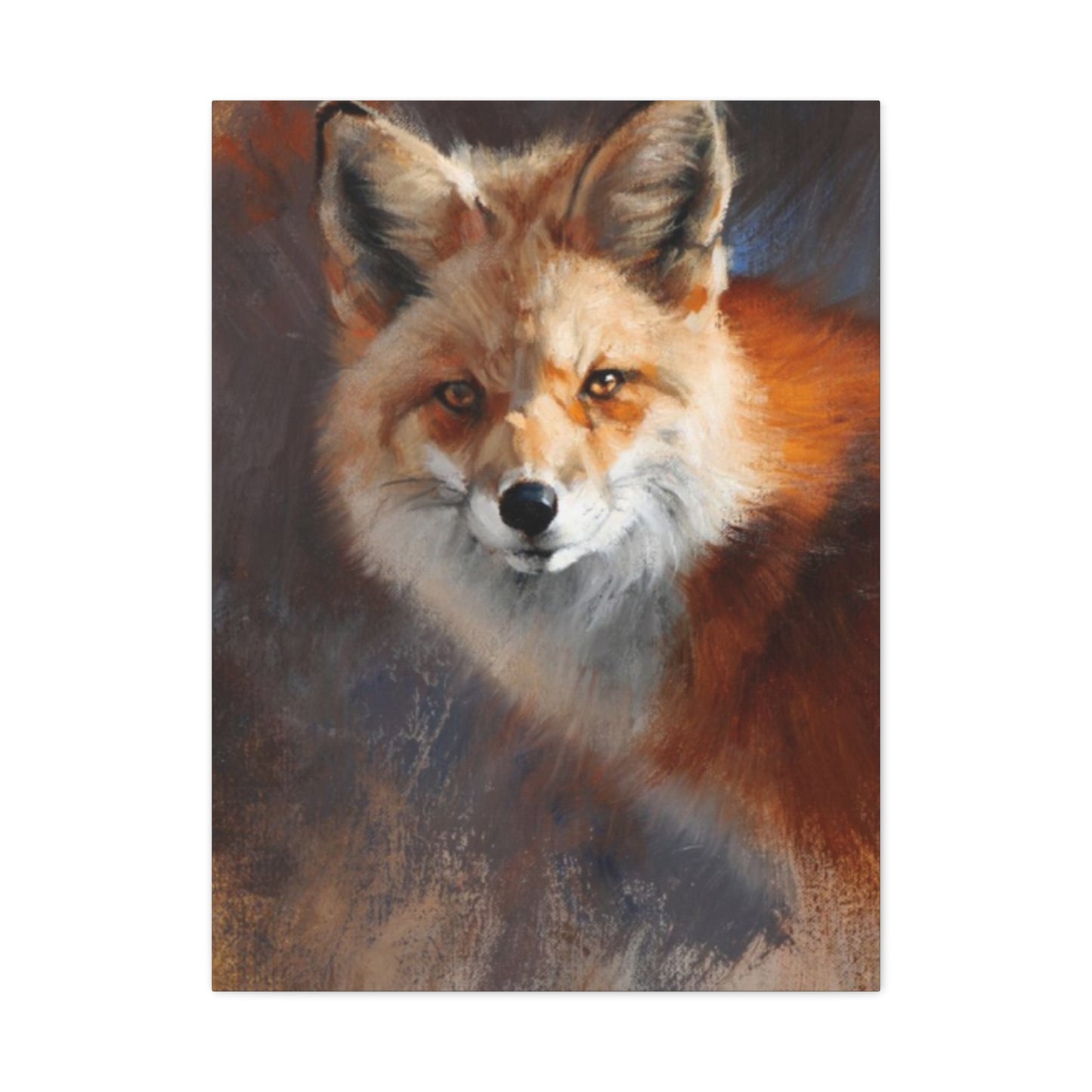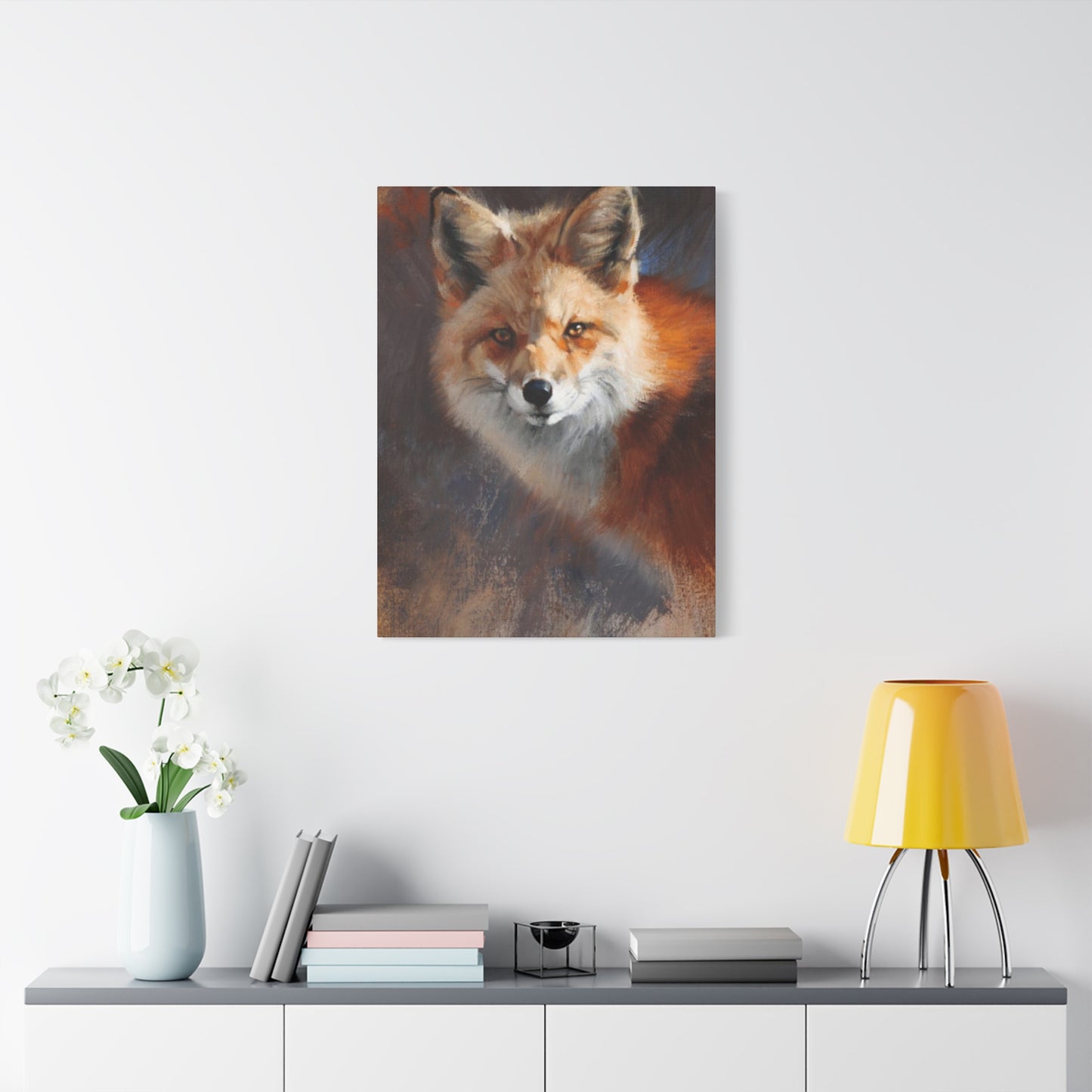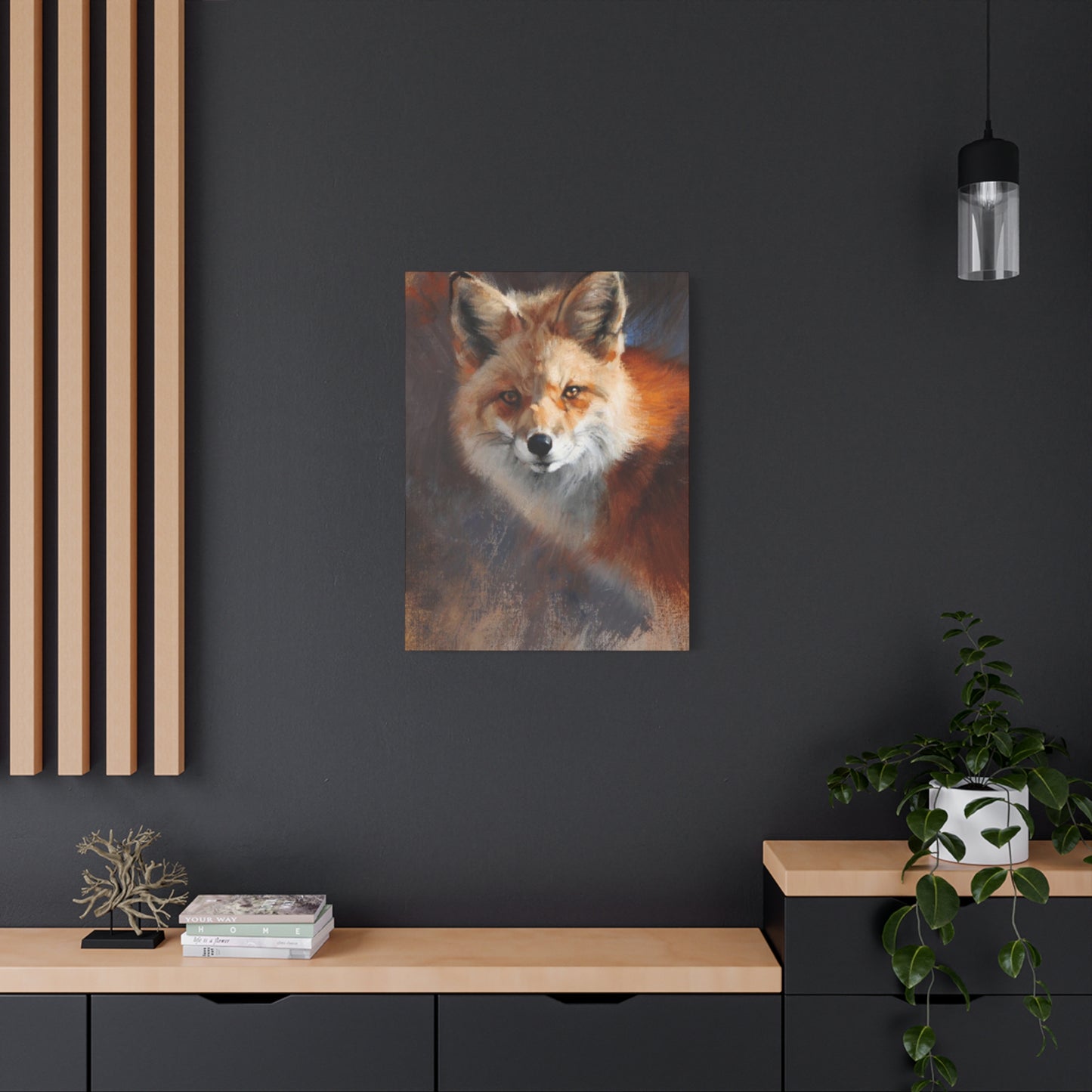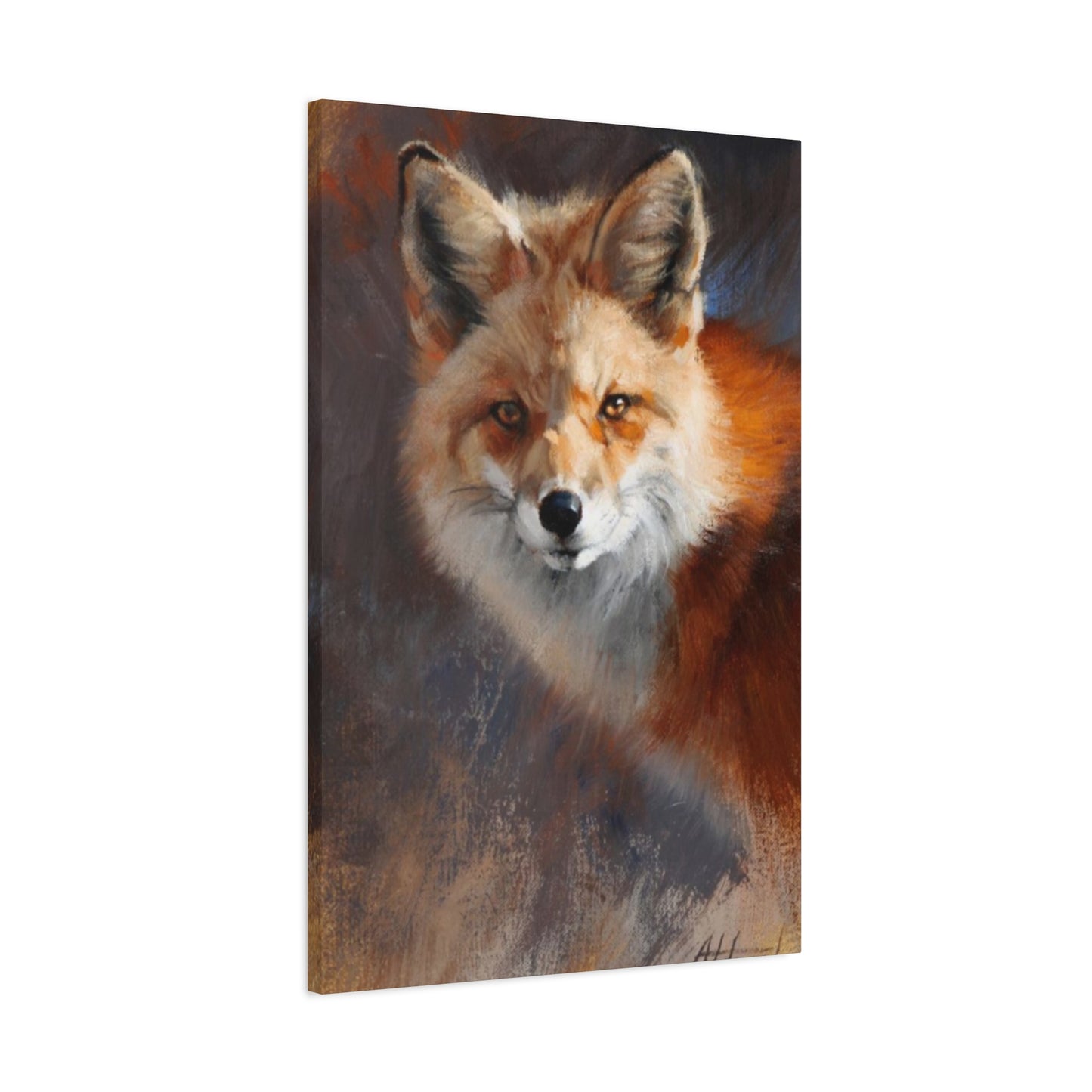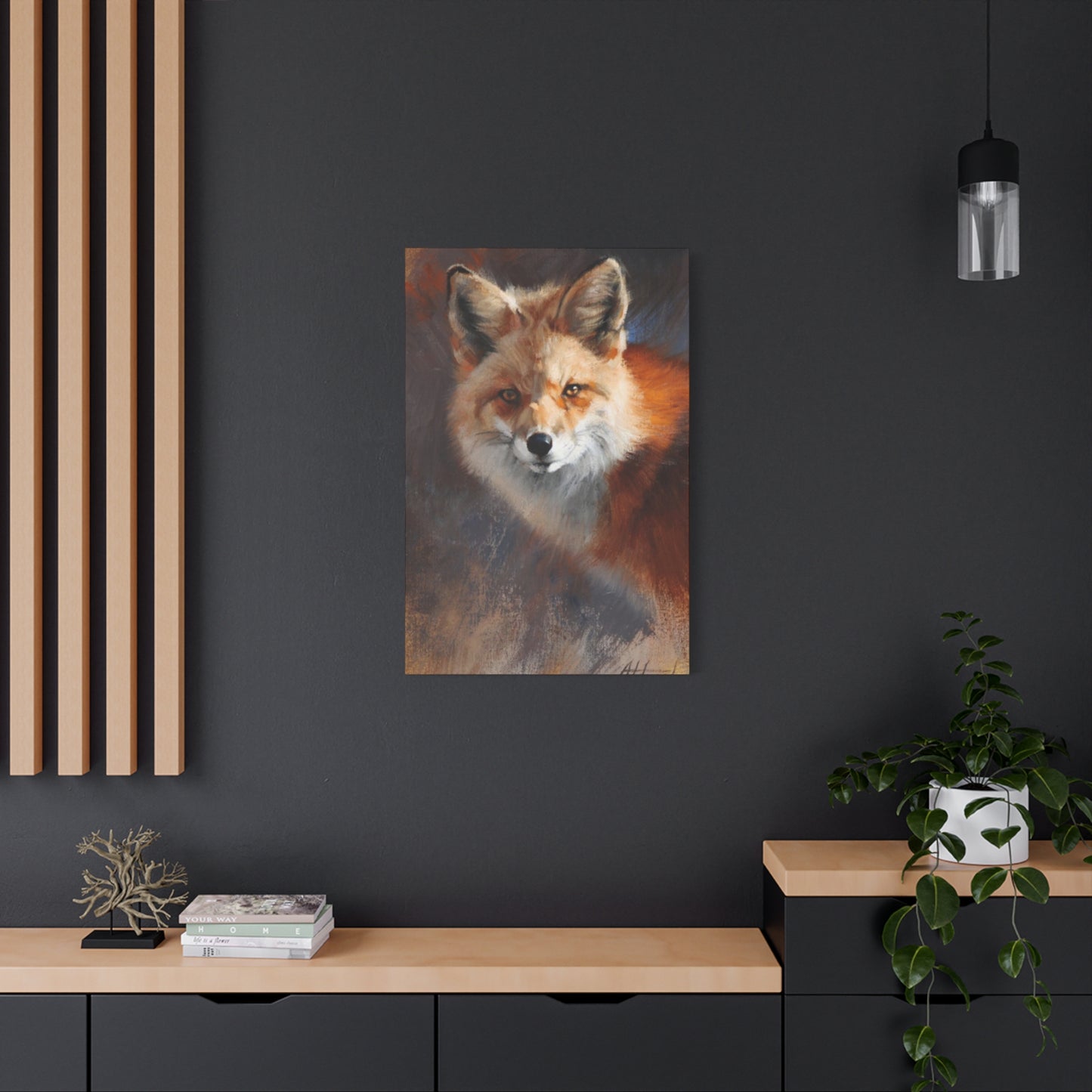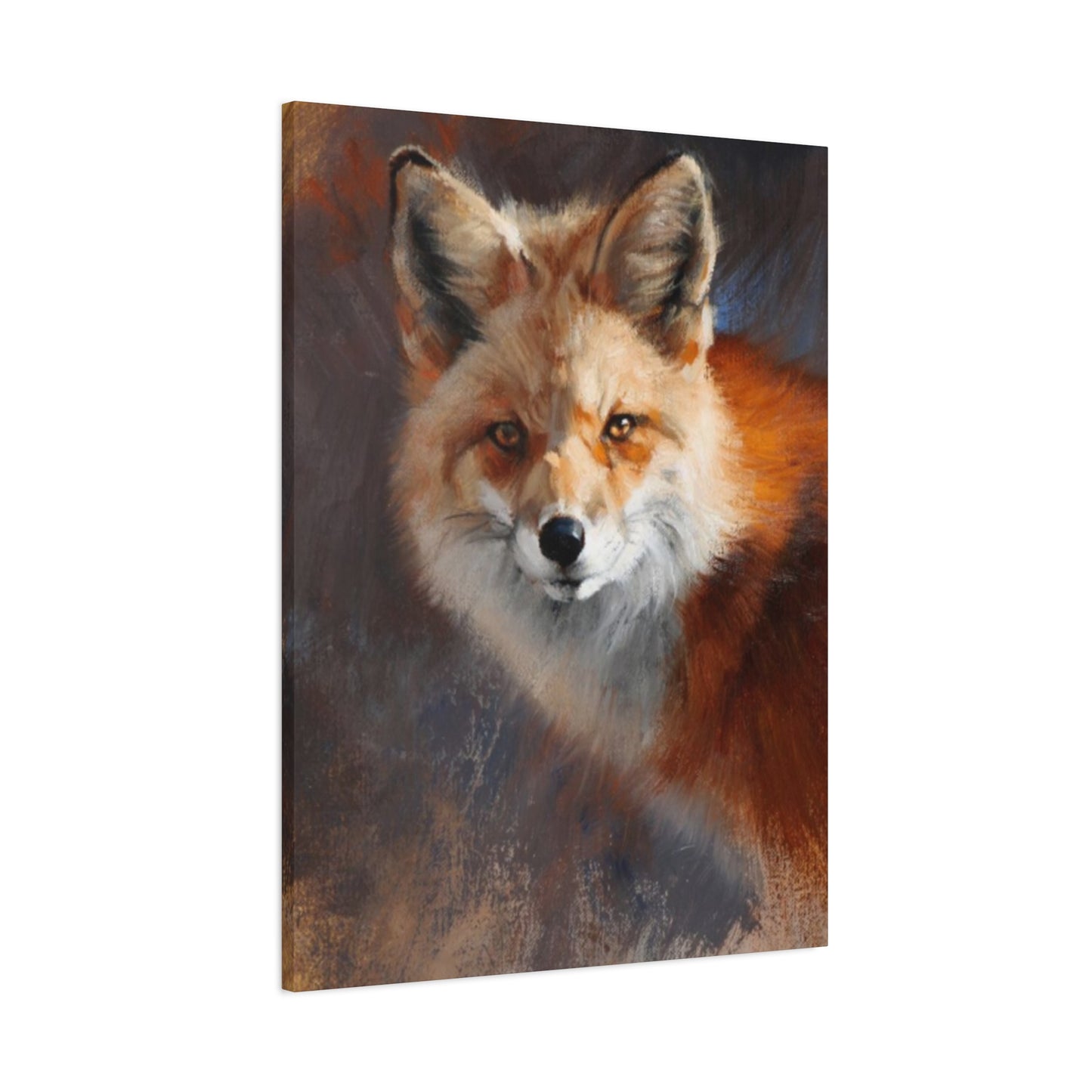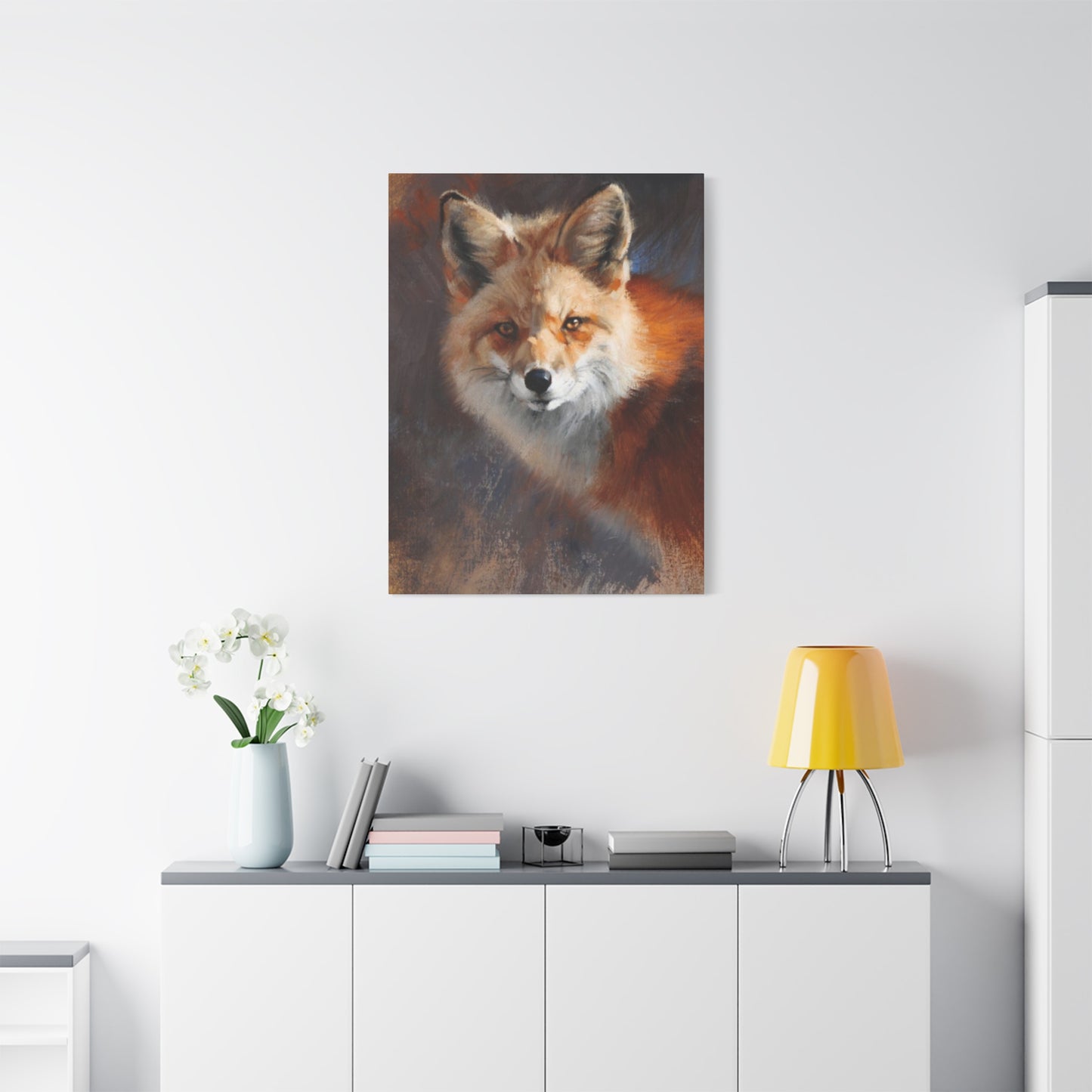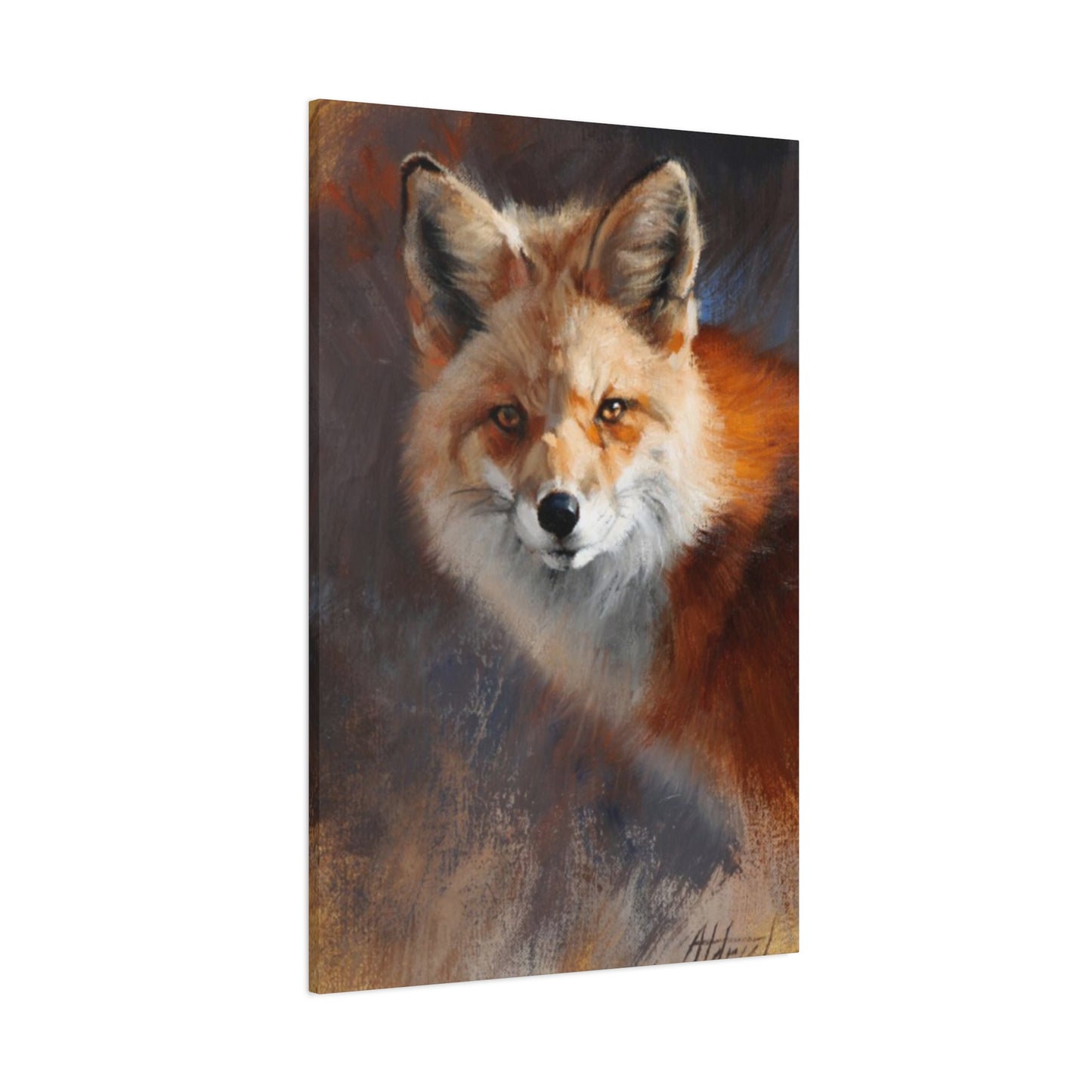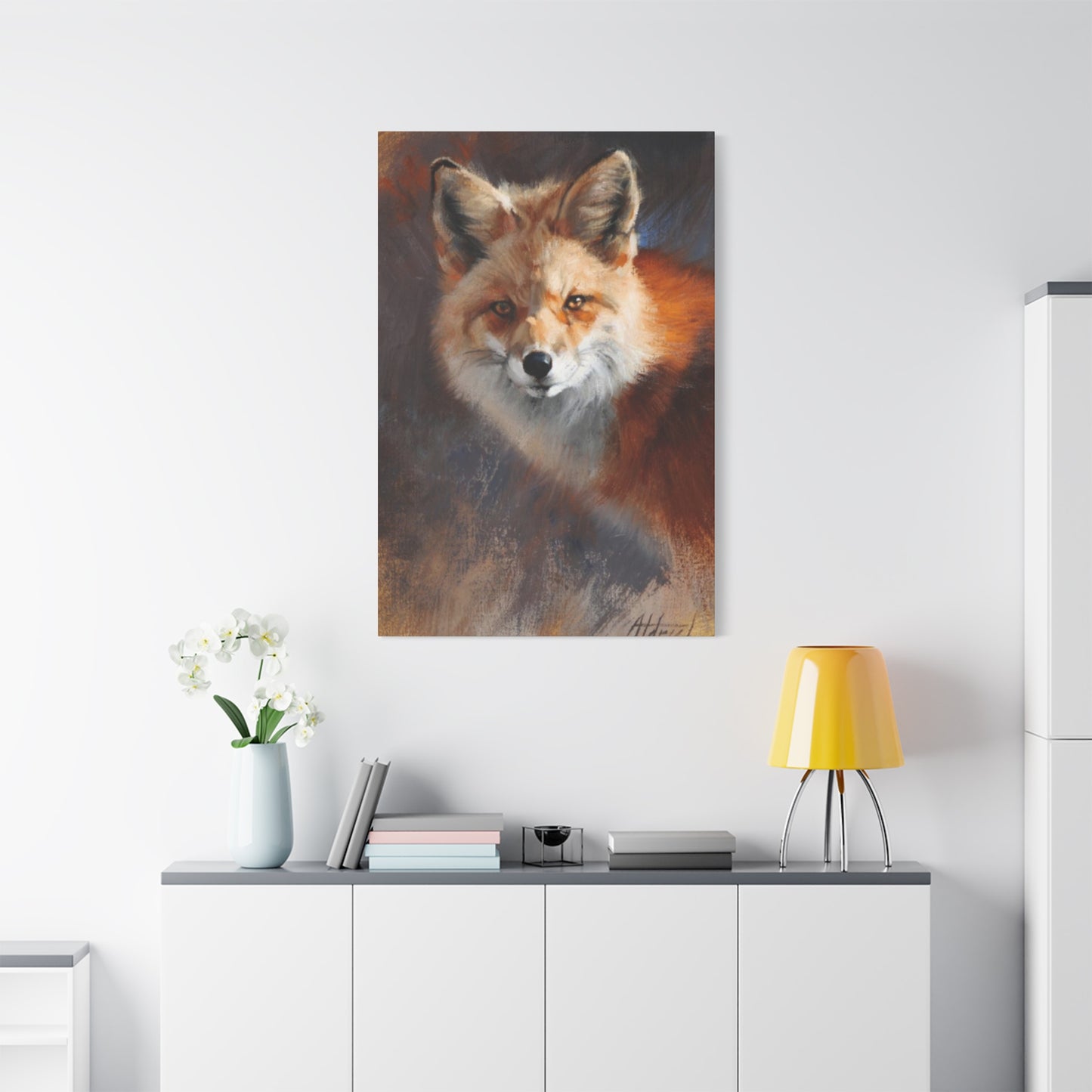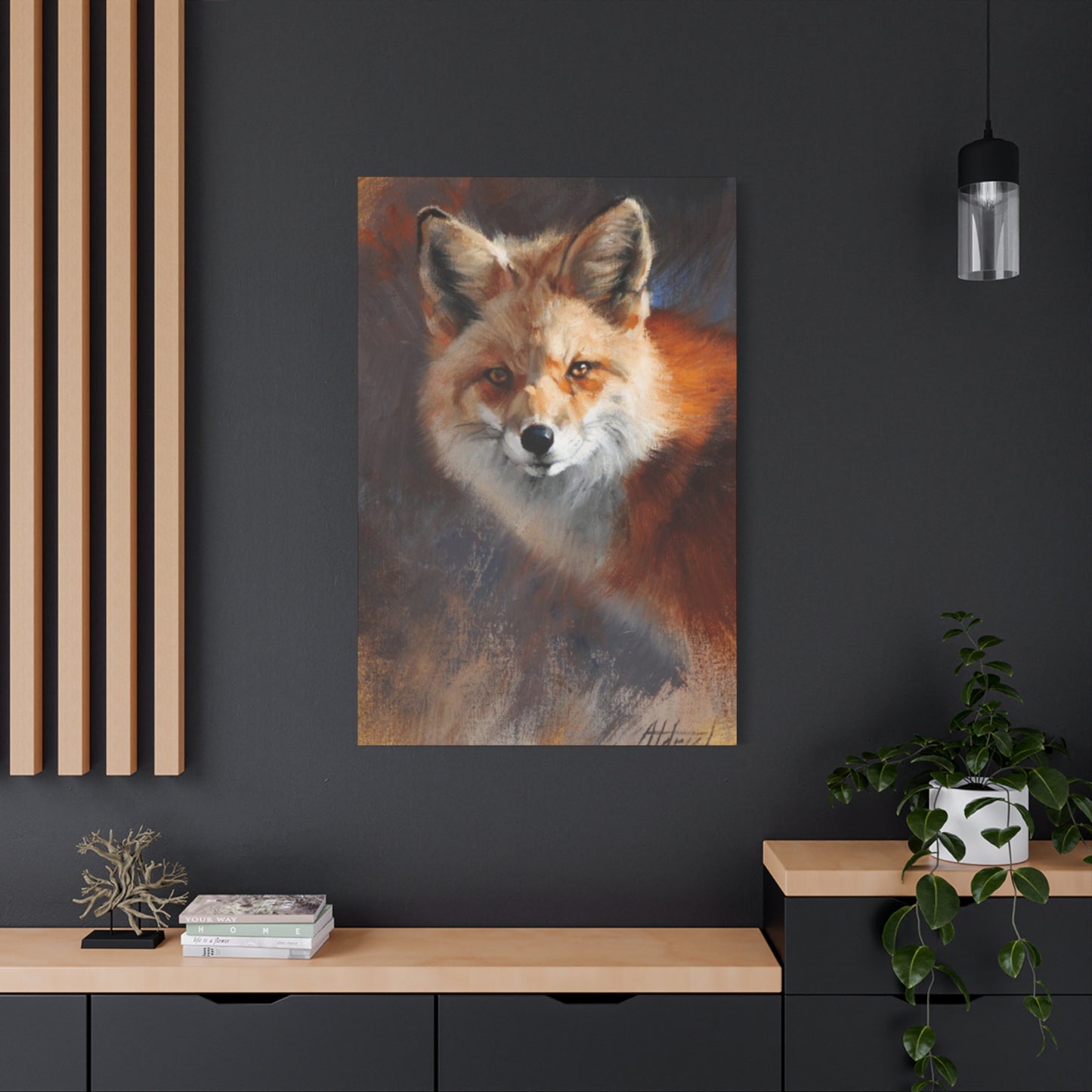Captivating Abstract Red Fox portrait Wall art: Bringing Wilderness Into Your Living Space
The allure of wildlife combined with artistic expression creates something truly remarkable when it comes to depicting one of nature's most cunning and beautiful creatures. The red fox, with its fiery coat and intelligent gaze, has long captured human imagination, and when rendered through an artistic lens that emphasizes color, form, and emotion over literal representation, the results can be absolutely stunning. This distinctive approach to animal imagery offers homeowners, art collectors, and nature enthusiasts a fresh way to celebrate the natural world while maintaining a sophisticated, contemporary aesthetic in their living spaces.
The Untamed Magnificence of Stylized Fox Imagery
When artists choose to represent the red fox through non-traditional methods, they tap into something deeper than mere visual representation. These creative interpretations capture the essence, spirit, and energy of this remarkable animal in ways that realistic photography or traditional painting simply cannot achieve. The resulting artwork speaks to something primal within us, reminding viewers of the untamed wilderness that exists just beyond our urban environments.
The artistic freedom inherent in this approach allows creators to emphasize the most captivating aspects of the fox's appearance and character. The rich russet tones of its coat might be amplified into brilliant oranges, deep crimsons, and warm amber hues that seem to glow with inner fire. The sharp, intelligent eyes characteristic of foxes become focal points of intensity and awareness, drawing viewers into a connection with the creature. The elegant lines of the fox's body, from its pointed ears to its magnificent tail, are enhanced and celebrated through bold strokes and dynamic compositions.
This artistic style works particularly well for the red fox because these animals already possess such striking visual characteristics. Their contrasting coloring, with white underbellies and black legs, provides natural opportunities for dramatic visual interplay. Artists working in this medium can exaggerate these contrasts, play with unexpected color combinations, or blend hues in ways that suggest movement and vitality. The result is artwork that feels alive, dynamic, and capable of transforming any space it inhabits.
Beyond mere decoration, these pieces serve as conversation starters and focal points within a room. Guests invariably find themselves drawn to such distinctive imagery, sparking discussions about wildlife, art, personal taste, and the ways we choose to bring elements of nature into our homes. The fox itself carries rich symbolic meaning across many cultures, representing cleverness, adaptability, and survival skills that resonate with viewers on multiple levels.
The emotional impact of such artwork should not be underestimated. In our increasingly digital and urbanized world, maintaining a connection to the natural world becomes ever more important for mental health and wellbeing. Having visual reminders of wildlife and wilderness within our daily environment helps ground us, providing moments of reflection and connection to something larger than ourselves. A striking representation of a fox can serve as a daily reminder of the beauty and complexity of the natural world, even for those who rarely venture beyond city limits.
Why Stylized Fox Artwork Creates Distinctive Visual Impact
Choosing to decorate with non-traditional animal imagery demonstrates a willingness to step beyond conventional design choices and embrace something more personal and expressive. While many homeowners opt for safe, neutral artwork that blends into the background, selecting bold wildlife representations makes a clear statement about personality, values, and aesthetic preferences. It announces to visitors that the inhabitant values nature, appreciates artistic creativity, and isn't afraid to make confident design choices.
The versatility of this artistic approach means it can work within various interior design schemes. A piece featuring bold, saturated colors and energetic brushstrokes might complement a modern, minimalist space by providing a necessary injection of warmth and vitality. Alternatively, artwork with softer, more muted tones and gentle color transitions could enhance a rustic or cottage-style interior without overwhelming the existing aesthetic. The key lies in selecting pieces whose color palette and energy level align with the overall atmosphere you wish to create.
One significant advantage of this artistic style is its ability to bridge the gap between formal and casual environments. These pieces possess enough sophistication to hold their own in professional settings like offices or consultation rooms, yet they remain approachable and engaging enough for residential spaces where comfort and personality take precedence. A veterinary clinic might feature such artwork to celebrate the animals they serve, while a home library could use the same piece to add warmth and interest to what might otherwise be an austere space filled with books and dark wood.
The investment value of quality artwork featuring wildlife themes continues to grow as more people seek meaningful connections to nature through their possessions. Unlike mass-produced prints that hold little value beyond their decorative function, original or limited edition pieces from talented artists can appreciate over time. Collectors who focus on wildlife themes often seek out distinctive interpretations that stand apart from conventional representations, making stylized fox imagery particularly desirable within certain collecting circles.
From a psychological perspective, surrounding ourselves with images that spark joy and interest contributes to overall wellbeing. Research in environmental psychology consistently demonstrates that our physical surroundings significantly impact mood, productivity, and stress levels. Artwork featuring animals we find appealing triggers positive emotional responses, creating environments where we feel more relaxed and content. The fox, being both beautiful and charismatic, serves as an excellent subject for artwork intended to enhance living spaces in these ways.
The educational aspect of featuring wildlife artwork should not be overlooked, particularly in homes with children. Having such pieces prominently displayed naturally leads to conversations about foxes, their habitats, behaviors, and the importance of wildlife conservation. Children who grow up surrounded by respectful, artistic representations of animals often develop stronger connections to nature and greater interest in environmental stewardship. The artwork becomes more than decoration; it becomes a teaching tool and a means of instilling values.
Incorporating Wildlife Imagery Into Your Home Environment
The decision to feature nature-inspired artwork within your living space reflects a desire to maintain connection with the organic world despite the artificial environments we typically inhabit. Fox imagery specifically brings an element of the wild into domesticated spaces, creating an appealing tension between civilization and wilderness. This decorative choice works exceptionally well in various rooms throughout the home, each offering different opportunities for visual impact.
In living rooms and common areas, larger pieces serve as commanding focal points that anchor the entire design scheme. Positioned above a sofa or fireplace, a substantial fox representation immediately draws the eye and sets the tone for the space. The colors within the artwork can be echoed through throw pillows, blankets, or other accessories, creating a cohesive look that feels intentional and well-considered. The living room often serves as the primary gathering space for families and guests, making it ideal for artwork that sparks conversation and creates memorable impressions.
Bedrooms offer opportunities for more intimate connections with the artwork. Here, the piece becomes something you see first thing upon waking and last thing before sleeping, making it particularly important that the imagery and energy align with the atmosphere you wish to maintain. A fox representation featuring calmer colors and a peaceful composition might promote relaxation and restful sleep, while something more vibrant and energetic could provide daily inspiration and motivation. The bedroom's private nature also allows for more personal, potentially unconventional choices that purely reflect individual taste without concern for others' opinions.
Home offices and creative workspaces benefit tremendously from inspiring visual elements. The fox's associations with cleverness and adaptability make it particularly appropriate for spaces dedicated to problem-solving and innovation. Having such imagery within your field of vision while working can serve as a subtle reminder to approach challenges with intelligence and flexibility. The visual interest provided by quality artwork also offers necessary mental breaks during intensive work sessions, giving the eyes and mind something engaging to focus on during brief moments of rest.
Dining areas present unique opportunities for artwork that celebrates nature and abundance. Fox imagery in these spaces can create conversation during meals, particularly when entertaining guests. The warm colors typically associated with fox representations complement the convivial atmosphere of shared meals, while the artistic nature of the piece elevates the space beyond purely functional dining room status. Many people find that thoughtfully chosen artwork in dining areas makes both everyday family meals and special occasion gatherings feel more memorable and meaningful.
Even unexpected spaces like hallways, staircases, and entryways can be dramatically enhanced through strategic placement of compelling wildlife artwork. These transitional spaces often receive little design attention despite being areas we pass through multiple times daily. A striking fox representation in an entryway immediately establishes the home's aesthetic tone for arriving guests while providing homeowners with a welcoming sight each time they return home. Staircase walls, which often stretch vertically across multiple floors, offer excellent opportunities for larger pieces or carefully curated collections that create visual interest in otherwise overlooked areas.
Children's rooms and play spaces can be particularly enhanced by wildlife imagery that sparks imagination and curiosity. Stylized representations of foxes appeal to young people's natural affinity for animals while offering more sophistication than cartoon characters that children may quickly outgrow. The artwork can remain relevant and appreciated as children mature, avoiding the need for frequent redecoration as tastes evolve. Additionally, having quality artwork in children's spaces sends an important message about the value of art and the importance of creating beautiful, thoughtful environments.
The Allure of Stylized Fox Imagery for Interior Design
There exists something inherently captivating about artistic representations that capture an animal's essence while embracing creative freedom in color, form, and composition. When applied to the red fox, this approach yields results that feel both familiar and excitingly new. The fox remains recognizable, yet the artistic interpretation adds layers of meaning, emotion, and visual interest that transcend simple representation.
The color possibilities within this artistic framework are virtually limitless. While traditional depictions stick closely to the fox's natural russet coloring, more creative approaches might incorporate unexpected hues that complement specific interior design schemes. Imagine a fox rendered in cool blues and silvers for a contemporary space with similar tones, or one featuring warm golds and deep purples to enhance a luxurious, jewel-toned room. The ability to find or commission pieces that align perfectly with existing color palettes makes this artwork type incredibly versatile for interior designers and homeowners alike.
Texture plays a crucial role in how these pieces impact a space. Some artists work in styles that emphasize visible brushstrokes, creating surfaces that catch light differently depending on viewing angle and time of day. This textural dimension adds depth and interest, ensuring the artwork remains engaging even after years of daily viewing. Other creators favor smoother approaches with seamless color transitions that create almost ethereal effects, giving the fox an otherworldly quality that sparks imagination and contemplation.
The compositional choices available when working with fox imagery are equally diverse. Some pieces feature tight, focused views that capture primarily the fox's face, creating intense, almost confrontational engagement with the viewer. These close-up compositions work wonderfully in smaller spaces or as part of larger gallery walls where they contribute their energy without requiring extensive wall real estate. Alternatively, full-body depictions that show the fox in dynamic poses or natural settings create narrative possibilities, inviting viewers to imagine stories and contexts surrounding the captured moment.
Scale considerations significantly impact how artwork functions within a space. A single large-scale piece commands attention and serves as a clear focal point, while multiple smaller pieces can be arranged to create rhythm and visual flow across a wall. Some collectors prefer creating themed galleries featuring multiple fox representations by different artists or in various styles, building collections that tell stories and demonstrate the range of creative possibilities within this single subject matter.
The framing and presentation of the artwork dramatically influences its overall impact and integration into the space. Sleek, modern frames in black or metallic finishes emphasize contemporary aspects and create clean lines that work well in minimalist or industrial-style interiors. Natural wood frames in various finishes can enhance the connection to nature while adding warmth that softens more austere environments. Some pieces work best without traditional frames, perhaps stretched on gallery-wrapped canvas that allows the image to wrap around the edges, creating a more immersive, boundary-free presentation.
Lighting considerations become crucial when displaying any significant artwork. Proper illumination brings out the full depth of colors and details while protecting the piece from damage. Track lighting, picture lights, or strategically placed lamps can be adjusted to highlight the artwork during evening hours, creating dramatic focal points that transform the room's entire atmosphere. Natural light considerations are equally important, as direct sunlight can fade colors over time, necessitating thoughtful placement or protective glazing on particularly valuable pieces.
Fox Imagery: Contemporary Approaches to Wildlife Representation
The evolution of animal representation in art reflects broader cultural shifts in how we relate to and conceptualize the natural world. Contemporary approaches to depicting wildlife move beyond documentary accuracy toward interpretations that emphasize emotional resonance, symbolic meaning, and artistic innovation. The red fox serves as an ideal subject for these explorations due to its rich cultural associations and inherently striking appearance.
Modern artists working with fox imagery often draw inspiration from diverse sources, blending techniques and influences from various artistic movements. Elements of impressionism might appear in loose, expressive brushwork that captures the energy and movement of the fox rather than precise anatomical details. Expressionist influences emerge in bold color choices and emotional intensity that transcend literal representation. Some pieces incorporate elements of cubism or other geometric approaches, fragmenting and reconstructing the fox in ways that challenge perception while remaining recognizable.
The democratization of art through digital tools and online platforms has led to an explosion of talented creators working in this space. Artists who might previously have struggled to find audiences for their wildlife interpretations can now reach global markets through online galleries and social media platforms. This accessibility benefits art collectors and enthusiasts who gain unprecedented access to diverse styles and perspectives from creators worldwide. The result is a vibrant, constantly evolving landscape of fox imagery that offers something for virtually every taste and aesthetic preference.
Cultural perspectives on foxes vary significantly across different societies, enriching the symbolic possibilities available to artists. In Japanese culture, the kitsune holds mystical significance as a shape-shifting spirit creature, often depicted with multiple tails representing age and wisdom. Celtic traditions associate foxes with cunning and adaptability, viewing them as guides through difficult situations. Native American perspectives vary among different tribes but often recognize the fox as a teacher of stealth and awareness. These varied cultural meanings can inform artistic interpretations, adding layers of significance beyond mere visual appeal.
The technical approaches artists employ when creating fox imagery have expanded dramatically with advancing technology. Traditional mediums like oil, acrylic, and watercolor remain popular, each offering distinct characteristics and possibilities. Digital creation tools now allow artists to achieve effects previously impossible or extremely difficult, from perfectly blended color gradients to complex layering and texturing. Many contemporary creators work across both traditional and digital mediums, sometimes combining techniques within single pieces to achieve unique results that showcase the best qualities of each approach.
The environmental consciousness movement has influenced how many artists approach wildlife subjects. Rather than creating artwork purely for aesthetic purposes, many creators now view their work as contributing to conservation awareness and advocacy. By creating beautiful, engaging representations of wildlife, artists help viewers develop emotional connections to animals and ecosystems, potentially inspiring greater environmental stewardship. This added dimension of purpose can make collecting such artwork feel more meaningful, transforming a simple decorative purchase into a statement of values and priorities.
Limited edition prints and reproductions make quality fox artwork accessible to broader audiences while still maintaining collectible value. Artists often create original pieces then produce limited runs of high-quality reproductions, numbering and signing each to verify authenticity and scarcity. This model allows art lovers with varying budgets to acquire works by talented creators while supporting artists financially. Understanding the distinction between mass-produced prints and limited editions becomes important for collectors concerned with value retention and authenticity.
Stylized Fox Canvas Prints: Ideal Choices for Wildlife Enthusiasts
For individuals who feel deep connections to animals and the natural world, artwork featuring wildlife subjects offers opportunities to express these passions within their living environments. Fox representations hold particular appeal for those drawn to animals that embody intelligence, beauty, and successful adaptation to human-altered landscapes. The artistic approach that emphasizes creative interpretation over documentary realism allows these pieces to function as both wildlife celebration and sophisticated artwork.
The technical quality of reproduction methods has reached levels where prints can rival originals in visual impact, particularly when produced on canvas using museum-grade inks and materials. Modern printing technology captures subtle color variations, fine details, and textural elements that earlier reproduction methods missed entirely. When properly produced and displayed, canvas prints offer durability and visual appeal that make them practical choices for most residential and commercial applications.
Canvas as a medium brings specific advantages for wildlife artwork. The slight texture inherent in canvas surfaces adds depth and interest that flat paper prints cannot match. This texture catches light in ways that create subtle variations throughout the day as lighting conditions change. Canvas prints typically require no glass covering, eliminating glare issues that can plague framed paper pieces and allowing for closer, more intimate engagement with the imagery. The ability to gallery-wrap canvas around stretcher bars creates a finished, three-dimensional object that needs no additional framing, though many people still choose to add frames for enhanced presentation.
Size options for canvas prints range from small accent pieces suitable for shelves and desks to massive statement works that dominate entire walls. The ability to scale imagery while maintaining quality allows homeowners to find pieces appropriately sized for their specific spaces and purposes. A small bedroom might accommodate a modest piece that provides interest without overwhelming the intimate space, while an expansive living area with high ceilings might demand a commanding large-scale work that fills the available visual space appropriately.
The production quality of canvas prints varies significantly based on materials and processes employed. Archival-quality inks resist fading from light exposure and environmental factors, ensuring the artwork maintains its vibrancy for decades with proper care. The canvas itself should be acid-free and appropriately weighted to prevent sagging or warping over time. Stretcher bars used to support the canvas should be substantial enough to maintain structure without visible warping, typically constructed from kiln-dried wood that resists moisture-related expansion and contraction. Serious collectors and those investing in larger, more expensive pieces should inquire about these technical specifications to ensure they receive products worthy of display.
The environmental impact of artwork production increasingly concerns conscientious consumers. Some producers have adopted eco-friendly practices, using water-based inks, sustainably sourced canvas and wood, and minimizing packaging waste. Seeking out creators and suppliers who prioritize environmental responsibility allows art purchases to align with personal values regarding sustainability and conservation. Given that fox artwork often appeals to nature lovers, this alignment between subject matter and production ethics can feel particularly important and appropriate.
Customization options vary among suppliers and artists, with some offering the flexibility to adjust colors, sizes, or even compositional elements to better suit specific needs. While purists might argue against altering an artist's original vision, practical considerations sometimes make modifications valuable. Perhaps the original piece features more blue tones than your space can accommodate, or the composition includes elements that would be cut off at the size you need. Working with flexible creators or suppliers who offer customization services can result in pieces that function better in their intended locations while still maintaining artistic integrity.
Creating Untamed Aesthetics With Fox-Themed Interior Design
Bringing elements of wilderness into carefully designed interiors requires balancing the wild, unpredictable qualities of nature with the order and intentionality that characterize thoughtfully decorated spaces. Fox imagery provides an excellent vehicle for achieving this balance, as these animals themselves exist at the intersection of wild and civilized worlds. Urban and suburban foxes have learned to navigate human environments while maintaining their essential wildness, making them perfect symbols for homes that seek to honor both civilization's comforts and nature's untamed beauty.
The concept of biophilic design, which emphasizes incorporating natural elements into built environments, has gained considerable traction among architects and interior designers. Research consistently demonstrates that exposure to nature and natural imagery reduces stress, improves cognitive function, and enhances overall wellbeing. Wildlife artwork serves as a powerful tool for bringing biophilic principles into spaces where actual nature connection might be limited. For apartment dwellers or those in dense urban environments, such artwork might represent the primary means of maintaining visual connection to the natural world.
Color psychology plays an important role in how fox imagery impacts room atmosphere. The warm tones typically associated with foxes—oranges, reds, golds—carry associations with energy, enthusiasm, and warmth. These colors stimulate without overwhelming, creating environments that feel inviting and dynamic. Spaces featuring these warm tones tend to encourage social interaction and creative thinking, making them excellent choices for living areas, creative studios, or anywhere people gather. Understanding these psychological effects allows for more intentional design choices that support the activities and moods desired in specific spaces.
Creating cohesive design schemes around fox artwork involves careful consideration of complementary elements throughout the space. If the piece features significant orange tones, incorporating those colors in smaller doses through accessories, textiles, or accent furniture creates visual harmony. Alternatively, using analogous colors—those adjacent to orange on the color wheel—provides related but not identical hues that feel naturally coordinated. Blues and greens, as complementary colors to the warm fox tones, can provide striking contrast that makes both the artwork and the contrasting elements appear more vibrant.
Texture layering enhances the sensory richness of spaces featuring wildlife artwork. If the fox piece has visible texture from brushstrokes or canvas weave, echoing that textural interest through fabric choices, wall treatments, or decorative objects creates multisensory engagement with the space. Smooth leather might contrast beautifully with rough textile weaves, while polished metal accents could offset matte wood finishes. These textural variations prevent spaces from feeling flat or monotonous, encouraging touch and closer examination of the environment's various elements.
The style consistency throughout a space need not mean everything matches precisely, but rather that elements share some underlying aesthetic philosophy. A space featuring contemporary fox artwork might incorporate mid-century modern furniture, industrial lighting fixtures, and minimalist accessories—all distinct but sharing clean lines and purposeful design. Alternatively, a more eclectic approach might combine the fox piece with vintage finds, handcrafted items, and elements from various design traditions, united by a curated eye that finds unexpected connections among disparate objects.
Seasonal refreshes represent practical ways to keep spaces feeling current and responsive to changing conditions without requiring complete redesigns. Fox artwork can serve as a constant anchor while surrounding elements rotate with seasons. Autumn might bring in rich burgundies, burnt oranges, and warm browns that echo and enhance the fox's natural coloring. Spring could introduce lighter, fresher accents that provide contrast while maintaining connection to the enduring wildlife theme. This approach allows for creative experimentation and regular change while preserving the core design investment.
The Grace and Poise of Foxes Captured Through Artistic Expression
Among the animal kingdom's many remarkable creatures, few possess the elegant combination of beauty, intelligence, and grace that characterizes the red fox. Artists who choose to capture these qualities face the exciting challenge of conveying not just physical appearance but also the essential character that makes foxes so compelling. The best artistic interpretations go beyond surface representation to suggest the fox's awareness, cunning, and fluid movement through its environment.
The facial features of foxes provide rich opportunities for artistic expression. Those distinctive triangular ears, alert and mobile, suggest constant awareness of surroundings. Artists often emphasize these features, perhaps exaggerating their size or positioning them at particularly attentive angles. The eyes hold particular importance, serving as windows into the fox's intelligence and emotional life. Whether rendered with photographic detail or suggested through minimal marks, the eyes typically serve as focal points that create connection between viewer and subject.
Body language and posture communicate volumes about an animal's state of mind and intentions. A fox frozen mid-step suggests stealth and careful attention, perhaps stalking prey or navigating dangerous terrain. One seated calmly with tail wrapped around its body conveys contentment and security in its environment. Artists skilled in capturing these subtle physical cues create images that feel alive and dynamic, even in the frozen medium of canvas or paper. Viewers respond to this suggested animation, finding themselves drawn into imagined narratives about what the fox might be thinking or doing beyond the captured moment.
The magnificent tail—that distinctive brush that constitutes much of the fox's visual signature—presents both challenges and opportunities for artistic interpretation. In realistic terms, this bushy appendage serves multiple practical purposes including balance, communication, and warmth during cold weather. Artistically, it offers a chance to showcase color transitions, textural variety, and flowing movement that can balance and complete compositions. Some artists give the tail particular emphasis, allowing it to dominate the composition and create sweeping curves that guide viewer attention throughout the piece.
Movement and energy can be suggested through various artistic techniques even in static images. Dynamic diagonal compositions convey action and direction, while more stable horizontal or vertical arrangements suggest stillness and contemplation. Blurred or loosely rendered background elements create sense of motion as the fox moves through its environment. Multiple directional brushstrokes or marks can suggest the texture and flow of fur responding to wind or the animal's movement. These technical choices transform simple depictions into narratives about the fox's relationship with its world.
The seasonal and environmental contexts often included in fox imagery add layers of meaning and visual interest. A fox navigating a snowy landscape takes on connotations of survival and adaptation to harsh conditions. One moving through autumn foliage blends into an environment of complementary colors, becoming part of a broader celebration of the season's beauty. Spring or summer settings might emphasize new life and abundance, positioning the fox within contexts of growth and vitality. These environmental choices allow artists to tell more complex stories beyond simply representing the animal itself.
Symbolic and metaphorical dimensions elevate fox imagery beyond decorative animal pictures into artworks with deeper resonance. The fox as trickster figure appears in folklore worldwide, representing cleverness that outsmarts brute strength or rigid authority. As survivor and adapter, foxes model resilience and flexibility in facing challenges. As beautiful wild creatures maintaining presence in human-altered landscapes, they represent nature's persistent vitality despite environmental pressures. Artists aware of these symbolic possibilities can create works that speak to viewers on multiple levels, offering both visual pleasure and meaningful content worth contemplating.
Fox Imagery: Striking Focal Points for Interior Spaces
Creating memorable, personalized living environments requires making design choices that reflect individual personality rather than simply following trends or playing safe with conventional options. Selecting artwork featuring fox imagery represents exactly this kind of confident, personal choice—one that announces specific interests and aesthetic preferences while creating undeniable visual impact. These pieces function as clear statements that the space's inhabitant values nature, appreciates artistic creativity, and possesses the confidence to make bold design moves.
The concept of focal points within interior design refers to elements that immediately capture attention upon entering a space, providing visual anchors around which other design decisions organize themselves. Effective focal points possess sufficient visual interest to deserve attention while relating harmoniously to surrounding elements. Fox artwork satisfies both requirements beautifully—its subject matter and artistic treatment ensure it commands notice, while the natural color palette typically found in such pieces allows relatively easy integration into various design schemes.
Room entry perspectives significantly impact where focal points should be positioned for maximum effectiveness. People naturally look ahead and slightly upward when entering spaces, making walls directly visible from doorways prime locations for important artwork. The fox piece positioned at this key location becomes the first significant element visitors notice, setting expectations for the entire space's aesthetic and establishing the homeowner's design sensibilities. This strategic placement transforms the artwork into more than decoration—it becomes the space's defining feature.
Scale relationships between artwork and surrounding furniture demand careful consideration. Design conventions suggest that pieces hung above furniture should measure approximately two-thirds the furniture's width to maintain visual balance. A sofa measuring seven feet across would pair well with artwork or grouped pieces spanning roughly four and a half to five feet horizontally. These proportional relationships prevent pieces from appearing either lost on expansive walls or overwhelmingly large for their surroundings. However, intentionally violating these conventions can create dramatic effects when done purposefully and skillfully.
Height placement follows general guidelines while remaining flexible based on specific circumstances. The standard recommendation suggests hanging artwork so its center falls approximately 57 to 60 inches from the floor, roughly average eye level for most adults. Spaces where people primarily sit might benefit from slightly lower placement, while areas viewed mainly while standing might accommodate higher positioning. The goal involves ensuring comfortable viewing without neck strain while maintaining pleasing relationships with surrounding architectural and decorative elements.
Negative space—the areas surrounding the artwork—plays crucial roles in how pieces read within their environments. Cramming artwork tightly among competing elements dilutes its impact and creates visual confusion. Allowing adequate breathing room around the fox piece ensures it can be appreciated as a distinct object while giving the eye places to rest between various visual elements. This principle of negative space proves particularly important with bold, energetic pieces that need visual buffer zones to prevent overwhelming viewers.
Lighting design specifically planned around featured artwork elevates presentation from adequate to exceptional. Professional galleries and museums employ carefully calculated lighting systems that bring out artwork's full potential while protecting it from damage. Homeowners can adopt similar principles using picture lights, adjustable track systems, or strategically placed lamps. The warm glow of dedicated lighting transforms artwork into luminous focal points during evening hours, creating ambiance that fundamentally changes room atmosphere compared to daytime appearance.
Playful and Dynamic: Stylized Fox Wall Decorations
Wildlife artwork need not always present animals in serious, dignified poses emphasizing their majesty or power. Many of the most appealing fox representations embrace playful, energetic qualities that capture these animals' curious, mischievous characteristics. Foxes at play, investigating their surroundings, or engaging in characteristic behaviors like pouncing after prey create images full of personality and charm. These lighter, more whimsical approaches offer different emotional impacts than serious, portrait-style representations.
The personality of individual foxes shines through in artworks that capture specific moments and behaviors. A fox caught mid-leap, all four paws off the ground and body stretched in a graceful arc, conveys athletic ability and joyful energy. One peering around a tree trunk with just its face visible suggests both caution and curiosity about whatever has caught its attention. These behavioral moments create narratives that viewers naturally construct stories around, engaging imaginative faculties in ways that static poses cannot match.
Color saturation and vibrancy significantly impact artwork's emotional tone. Highly saturated, vibrant colors create feelings of energy, joy, and vitality. The natural rust-red of fox fur amplified into brilliant, almost fluorescent oranges communicates exuberance and catches attention across crowded spaces. Combined with equally bold supporting colors—perhaps electric blues, vivid purples, or lime greens—these high-energy pieces create excitement and visual stimulation appropriate for spaces meant to inspire creativity or social interaction.
Compositional dynamism involves how visual elements interact to create movement and energy within static images. Diagonal lines suggest motion and instability in ways that feel exciting rather than uncomfortable. A fox positioned on a diagonal moving from lower left to upper right creates implicit upward motion associated with growth and positive development. Curves and organic shapes suggest natural growth patterns and gentle movement, while sharp angles and fractured elements convey energy bordering on chaos. Artists manipulate these formal elements to create desired emotional responses in viewers.
The artistic styles employed dramatically influence how playful and energetic the resulting imagery feels. Loose, gestural approaches with visible brushstrokes and areas where canvas shows through suggest spontaneity and unrestrained creativity. Dripping paint or splattered elements reference street art and contemporary graphic design, bringing youthful, rebellious energy. Conversely, carefully rendered elements with smooth color transitions and precise details feel more controlled and contemplative, even when depicting action-filled moments. Recognizing these stylistic signals helps in selecting pieces whose energy levels match intended room atmospheres.
Combining multiple pieces into gallery walls or grouped arrangements creates opportunities for visual variety and expanded storytelling. A collection might include several fox representations in different poses, sizes, and styles, creating ensemble effects more complex and interesting than any single piece could achieve. The arrangement itself becomes creative act—spacing, alignment, and relationships between pieces all contribute to overall impact. Some arrangements emphasize symmetry and order, while others embrace organic, asymmetrical layouts that feel more spontaneous and energetic.
Interactive elements represent emerging possibilities in how we engage with displayed artwork. Some contemporary pieces incorporate lighting elements that respond to movement or sound, creating displays that react to viewer presence. Others feature augmented reality components that reveal additional content when viewed through smartphone applications. While these technological enhancements remain uncommon in traditional artwork markets, they represent expanding possibilities for how fox imagery might engage audiences in coming years, particularly appealing to younger, technology-comfortable demographics.
Infusing Spaces With Color and Innovation Through Fox Artwork
Color functions as one of interior design's most powerful tools, capable of dramatically influencing mood, perception, and atmosphere within spaces. The natural color palette associated with red foxes provides rich starting points for color schemes that feel warm, inviting, and energizing without becoming overwhelming. From deep burnt oranges through rusty reds to golden ambers, these hues carry associations with autumn harvests, glowing fires, and natural warmth that humans find inherently comforting.
Color theory principles help in understanding how fox-themed artwork might interact with existing or planned design schemes. Analogous color schemes use colors adjacent on the color wheel, like oranges, reds, and yellows, creating harmonious palettes that feel naturally coordinated. These schemes work well for creating cohesive, comfortable environments where elements relate smoothly to one another. Complementary color schemes pair opposites like orange and blue, creating dramatic tension and vibrant contrast that makes both colors appear more intense. These bolder schemes suit spaces meant to energize and stimulate rather than soothe.
Temperature relationships between colors significantly affect spatial perception and emotional response. Warm colors like the oranges and reds of fox fur advance visually, appearing to come forward in space, while cool blues and greens recede, creating depth. Rooms dominated by warm tones feel cozier and more intimate, though potentially smaller. Cool colors create impressions of spaciousness and calm. Balancing these temperatures through thoughtful artwork selection and placement can manipulate how spaces feel without changing their actual dimensions.
Saturation and value variations within colors provide additional design variables. Highly saturated, intense colors create energy and demand attention, while desaturated, muted versions feel calmer and more sophisticated. Light values create airiness and optimism, while dark values add drama, weight, and sometimes melancholy. Fox artwork might feature the bright, saturated oranges of autumn leaves or the muted, earthier tones of desert foxes, each creating distinctly different atmospheric effects. Understanding these variations allows for more nuanced selections that support specific design goals.
The psychological and cultural associations carried by colors influence how viewers respond to color-saturated artwork. Orange combines red's energy with yellow's cheerfulness, resulting in colors associated with enthusiasm, creativity, and warmth. Many cultures view orange as spiritual or sacred, while others associate it with warnings and caution. Red carries powerful connotations of passion, danger, love, and power across many societies. Gold suggests wealth, success, and premium quality. Artists working with fox subjects tap into these associations whether consciously or not, and viewers respond to them on both conscious and unconscious levels.
Innovative techniques and unconventional approaches push beyond traditional color uses into experimental territory. Some artists incorporate metallic elements—gold leaf, copper paint, silver accents—that catch light and create shimmer impossible with standard pigments. Others employ fluorescent or phosphorescent materials that glow under blacklight or absorb light to release it slowly in darkness. Digital printing technologies enable color gradations and effects previously impossible or prohibitively difficult, from perfectly smooth transitions between hues to complex patterns and textures. These innovative approaches create artwork that stands apart from conventional offerings.
Personal color preferences and responses vary based on individual psychology, cultural background, and life experiences. While general principles of color psychology hold true for many people, personal associations sometimes override these common patterns. Someone with happy childhood memories of autumn camping trips might respond particularly positively to warm orange tones, while another person who experienced trauma during autumn might find the same colors unsettling. When selecting artwork for personal spaces, individual responses ultimately matter more than abstract design principles, though understanding both leads to most satisfying decisions.
Fox Artwork for Modern and Cutting-Edge Interior Design
Contemporary design aesthetics emphasize clean lines, minimal ornamentation, and purposeful simplicity that allows standout elements to truly shine. Within these restrained environments, carefully selected artwork becomes exponentially more important, as fewer decorative elements mean each must work harder to create visual interest and emotional resonance. Fox imagery adapted to contemporary design sensibilities—perhaps through simplified forms, bold color blocking, or geometric interpretation—provides exactly the kind of striking focal point these spaces require.
The minimalist principle of "less is more" applies as much to artwork selection as to furniture and accessories. Rather than covering walls with numerous small pieces, contemporary design typically favors fewer, larger, more impactful works. A single commanding fox representation can do more to define a space than a dozen smaller, scattered pieces. This approach requires confidence and willingness to invest in significant works that truly deserve the attention they'll receive as primary visual features within their environments.
Mid-century modern design, experiencing renewed popularity, pairs particularly well with certain approaches to wildlife art. The organic forms and natural materials favored by mid-century designers create natural affinity with subject matter drawn from nature. Fox artwork featuring simplified, somewhat stylized forms rendered in period-appropriate colors—avocado greens, burnt oranges, golden yellows—can reinforce mid-century themes while adding contemporary touches that prevent spaces from becoming museum recreations of 1950s and 60s aesthetics.
Conclusion
Incorporating Captivating Abstract Red Fox Portrait Wall Art into your living space is an excellent way to bring the beauty of the wilderness indoors. The red fox, with its vibrant coat and enigmatic nature, has long been a symbol of adaptability, cleverness, and the untamed spirit of the wild. An abstract representation of this captivating creature not only adds a touch of intrigue and elegance to your decor, but it also infuses the room with the mystique and freedom of nature.
What makes abstract red fox portraits so unique is their ability to capture the essence of the animal without relying on hyper-realistic detail. The bold, expressive lines, colors, and textures used in abstract art leave room for interpretation, allowing the viewer to connect with the piece on a deeper, more personal level. Whether it's the fiery reds, oranges, and golds of the fox’s fur or the fluid, sweeping strokes that mimic the animal’s graceful movement, these portraits evoke a sense of dynamic energy and fluidity that can elevate the overall feel of any room.
When choosing the right place for your red fox portrait wall art, consider the mood you want to set. These abstract pieces work wonderfully in spaces that aim to evoke creativity and inspiration. A living room, study, or reading nook, for example, can benefit from the energy and complexity of the piece. Its boldness and vibrant colors make it an excellent focal point in any room, capturing attention and sparking conversation. The portrait’s balance of nature and abstraction allows it to complement various interior styles, from modern minimalist to bohemian, rustic, or eclectic spaces.
In more minimalist or contemporary settings, a striking abstract red fox piece can serve as a dramatic contrast against clean lines and neutral tones. It adds a touch of warmth and personality, while the fluid, imaginative representation keeps the design feeling fresh and modern. For a more rustic or nature-inspired space, the fox portrait can harmonize beautifully with wooden furniture, earthy textures, and soft, muted tones, bringing a natural, organic element into the room.
These pieces also offer a unique opportunity to express a connection to the wild, whether you're someone who loves the outdoors, wildlife, or simply the beauty of nature. The fox, often seen as a creature that moves between realms—be it the forest, urban spaces, or the realm of myth—can be an intriguing metaphor for adaptability, transformation, and mystery. Having this representation in your space can inspire those very qualities, encouraging a sense of curiosity, resilience, and freedom.
In conclusion, Captivating Abstract Red Fox Portrait Wall Art is a perfect way to infuse your home with the wild energy, beauty, and spirit of the natural world. The abstract style allows the art to fit seamlessly into various decor themes, while the fox itself adds an element of sophistication, mystery, and charm. Whether you’re seeking to create a statement piece in your living room or add a dash of color and creativity to your space, this type of wall art brings the enchanting wilderness into the comfort of your home.

















